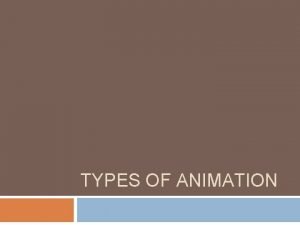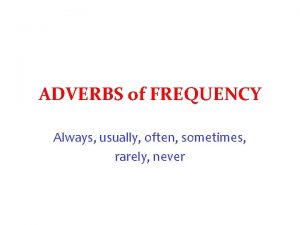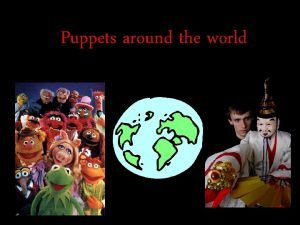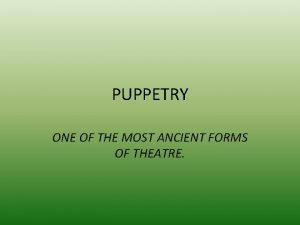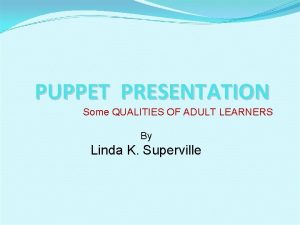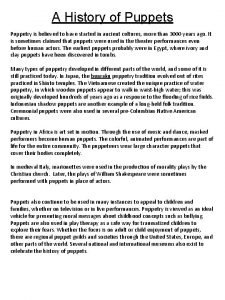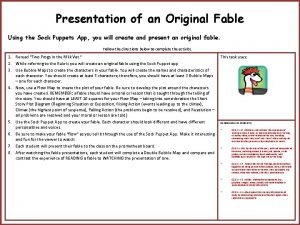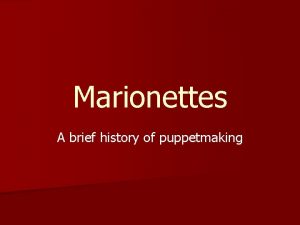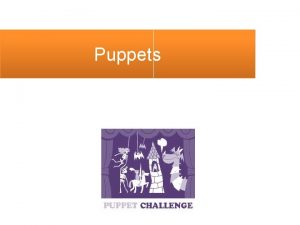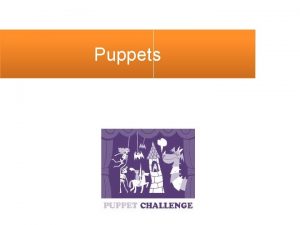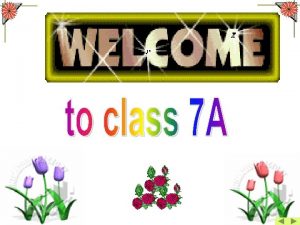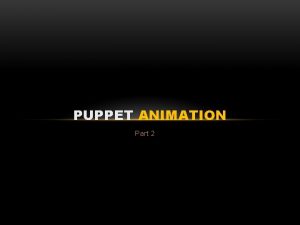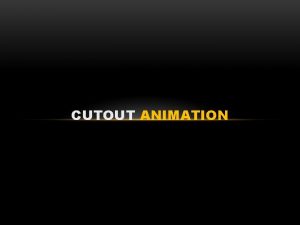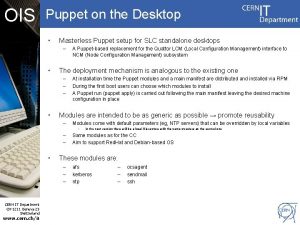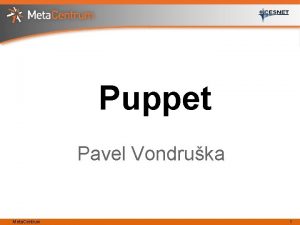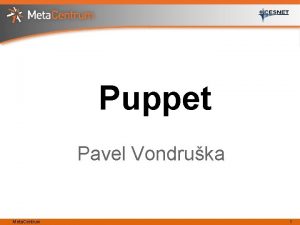PUPPET ANIMATION Part 1 Puppets are often modeled









- Slides: 9

PUPPET ANIMATION Part 1

• Puppets are often modeled after humans, anthropomorphic animals, or symbolic figures which can create strong emotional connections to the real world • Puppet theater mentioned in the writings of Plato and Aristotle • The Chinese made puppets from stretched animal skins • 17 th century saw popularity of hand puppets • Requires talents in sculpting, Timing, Composition, Acting, Straight Ahead Animation techniques • Some of the greatest puppet animators are from Eastern Europe and Russia • Early example of stop motion puppet animation • 1935, The New Gulliver, by Russian Animator Alexander Ptushko, • Stop Motion Animation utilize a Motion Control Camera: computer controlled that plots exact camera motion frame by frame

PUPPET CONSTRUCTION • There are various types of puppet construction • Wooden: Carved out of wood • Mixed media: fabrics, furs and metals • Found Objects: Made from everyday items • Latex Puppets: more elaborate, may contain gear mechanisms to control fine details such as facial motions • Armatures: Inner skeleton to hold puppet together, commonly made from wire, metal ball and socket system, wood

PUPPET ANIMATORS • Ladislaw Starewich: mixed media • George Pal: wooden • Jiri Trnka: wooden • Ray Harryhausen: latex, mixed media • Brothers Quay: found objects • Jan Svankmajer: found objects • Tim Burton: latex

LADISLAW STAREWICZ • Polish entomologist, Difficult time making documentary on beetles • Lights forced real beetles to hide, so he built armatures and used them in a puppet animation • Resulted in a “bedroom farce” rather than a documentary • Went on to animate and direct films for next 50 years • Screenings • The Cameraman’s Revenge, Ladislaw Starewicz, 1912

TONY SARG • Puppeteer • Frame by frame animation of a marionette puppet in silhouette • Screenings • The First Circus Part 1 & Part 2, 1921

WILLIS O’BRIEN • Puppets for film visual effects • Push for realism in puppet style and motion • Animated King Kong of 1933 • Skull under the clay used for close-up shots • Screenings • The Lost World, Willis O’Brien, 1925

GEORGE PAL • One of the most prolific puppet animators • Began in Hungary, Holland, England, America • Worked for Paramount pictures, called his works Puppetoons • Invented process of Replacement animation (replaceable parts for a motion rather than moving armature) • Effect seen in Tulips Shall Grow (1942 anti-Nazi film) • Nominated for Oscars almost every year in which they were produced • Went on to full feature films including Time Machine, War of the Worlds • Screenings: • George pal Documentary segments • Tulips Shall Grow, 1942

RAY HARRYHAUSEN • One of the most famous puppet animators • As a young boy he was inspired by Willis O’Brien’s work on original King Kong (1933) • Worked together with O’Brien on Mighty Joe young(1949) • Inspired many of the effects artists of today (Phil Tippet, Dennis Muren) • Classic films including 7 th voyage of Sinbad, Jason and the Argonauts(1963), Clash of the Titans(1981) • Invented “Dynamation” a rear screen projection process which allowed him to animate objects in front of the screen, with foreground and background mattes on glass • Screenings: • Aliens, Dragons and Monsters, Ray Harryhausen documentary segments

